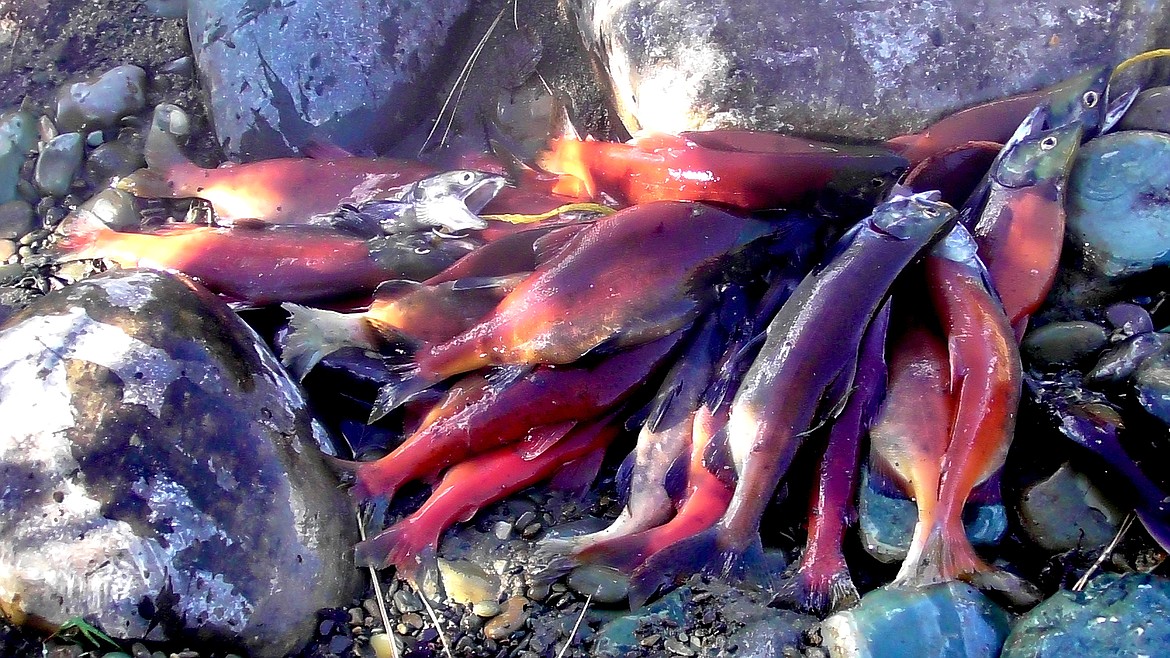Snagging kokanee on the Tobacco River
It’s kokanee season in Northwest Montana and Monday I participated in the annual tradition that many have for decades.
I knew snagging season began Sept. 15, but wasn’t giving it much thought when I wondered into Snappy’s last week. I was curious to see if the whitefish run had begun, but learned that begins later this fall.
But I did hear the kokes were running from Lake Koocanusa into the Tobacco River, so that made my plans for one of my weekend days easy.
I knew about the kokes from reading about them a few weeks ago in Mike Howe’s column in the Daily Inter Lake. I also had a friend who told me about them earlier this summer, so I was somewhat of the mind to try it when the season arrived.
Catching fish by snagging is typically regarded as unsportsmanlike, but I quickly learned the tradition dates back nearly a century after a some of their fish eggs were accidentally included in a shipment of Chinook Salmon eggs.
According to Jim Vashro, who was the regional fisheries manager in Kalispell for Montana Fish, Wildlife and Parks, the kokanee thrived here.
Where I lived in north-central Pennsylvania, there were no salmon. A three-hour drive to Lake Erie in the northwest part of the state to fish it and the tributaries or an overnight jaunt to Lake Ontario and rivers in New York were the nearest places to find salmon or steelhead.
One place in New York still stands out in my mind - Oak Orchard Creek. It’s a tributary to Lake Ontario in Orleans County. A dam on a small reservoir prevents the spawning salmon, trout and steelies from going too far from the lake and the fish stack up there in great numbers.
Snagging there isn’t legal, but many do it by camouflaging their efforts with a little bit of bait on a treble hook. The trick to it was to snag the fish in the mouth. If the fish was hooked in the mouth area, it could be kept, but those hooked elsewhere had to go back.
Anglers lined up along the highwall of the dam and dropped their baits into the water several feet below. Those that arrived very early and got a spot closest to the dam typically had better luck.
One of the best battles I had was with a tail-hooked king salmon that probably was 3 feet long. Trying to control a fish of that size was a battle that lasted at least a half hour!
Of course, kokes aren’t that big, but what mattered was that they were salmon and even if it’s just a little bit of meat, there’s not much better table fare than smoked salmon.
Starting the day, I wasn’t too far from the where the Tobacco River entered the reservoir, but that proved to be too far downstream. If you aren’t seeing several bright red shapes in a little bit of water, it’s time to move upstream and that’s exactly what I did.
I saw a few other anglers, then a few more — a dead giveaway that there are fish to be had.
I moved above the people and settled into a little spot where I quickly hooked a half dozen. A man below me had that amount and was taking a cigar break while his wife was doing well just above me.
She graciously offered me her spot when she decided to move back down to where her husband was fishing.
“They are really stacked up right here,” she said. “You should get in here.”
I was not going to look this gift horse in the mouth.
She wasn’t kidding, either. The kokes were stacked up as she described and it didn’t take long before I had my limit. I probably spent nearly as much time dressing them as I did catching them.
But the day’s work wasn’t done. These little babies needed smoked. A few short texts to one of my co-workers indicated her boyfriend was game for an afternoon of grill smoking.
Jon graciously allowed me into his parents’ home where we prepped the fish before he loaded the grill. About 90 minutes later, they were done and oh, were they good!
To be sure, snagging kokes isn’t classic Montana fly fishing, definitely not a scene from a movie.
But the salmon are going to die when they complete their spawning and there are so many it stunts their growth to the point where a fish longer than 12 inches in the Tobacco is considered pretty good size.
While no one knows for sure how long it will last, the tradition continues and I’m glad for it.
Scott Shindledecker can be reached at 406-758-4441 or sshindledecker@dailyinterlake.com.



